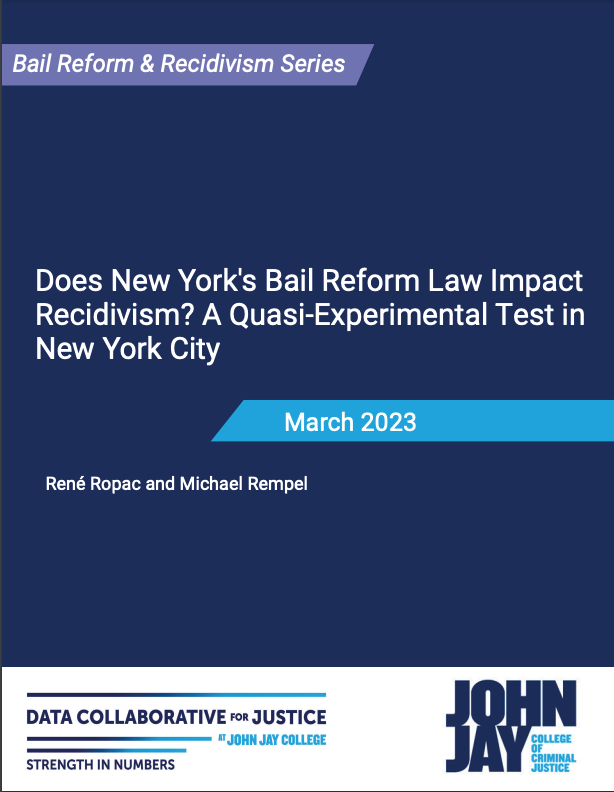Estimated Recidivism Impact by Criminal History
Prior Arrest or Not. Eliminating bail was associated with a statistically significant reduction in re-arrest on all four outcomes for people without a recent prior, while the analysis detected minimal effects in any direction for people with a prior.
• No Prior Arrest: Release was associated with lower rates of overall re-arrest (26% vs. 38%), felony re-arrest (12% vs. 20%), and VFO re-arrest (6% vs. 10%); and a modestly lower firearm re-arrest rate (1.3% vs. 2.2%). The survival analyses confirmed the benefits of release across all four outcomes— with the relative risk reduction ranging from 40% (any re-arrest) to 47% (firearm re-arrest).
• Recent Prior Arrest: Release was associated with a higher VFO re-arrest rate (22% vs. 18%), though there were no differences across the two groups in overall, felony, or firearm re-arrest. None of the results across any of the four outcomes were different in the survival analyses (including for VFO re-arrest).
Pending Case or Not. Eliminating bail for people without pending cases was associated with a statistically significant reduction in overall, felony, and VFO re-arrest, whereas the opposite was true for people with a pending case. There were no differences for firearm re-arrest. Results for the two-year re-arrest rates (see just below) were echoed in the survival analyses.
• No Pending Case: Release of people with no pending cases was associated with lower rates of overall re-arrest (39% vs. 48%), felony re-arrest (20% vs. 26%), and VFO re-arrest (12% vs. 14%).
• Pending Case: In contrast, releasing people with a pending case was associated with higher rates of overall re-arrest (69% vs. 63%), felony re-arrest (44% vs. 34%), and VFO re-arrest (27% vs. 17%).
Prior VFO Arrest or Not. Eliminating bail for people without a recent prior VFO arrest was associated with a reduction in overall, felony, and VFO re-arrest, whereas the opposite was true for people with a prior VFO arrest. There were no differences for firearm re-arrest. Results for the two-year re-arrest rates (see just below) were echoed in the survival analyses.
• No Prior VFO Arrest: The release of people with no prior VFOs was associated with lower rates of overall re-arrest (41% vs. 49%) and felony re-arrest (21% vs. 26%), and a marginal association with VFO re-arrest (12% vs. 13%).
• Prior VFO Arrest: Releasing people with a recent VFO arrest was associated with higher rates of overall re-arrest (72% vs. 62%), felony re-arrest (50% vs. 38%), and VFO re-arrest (36% vs. 24%).








